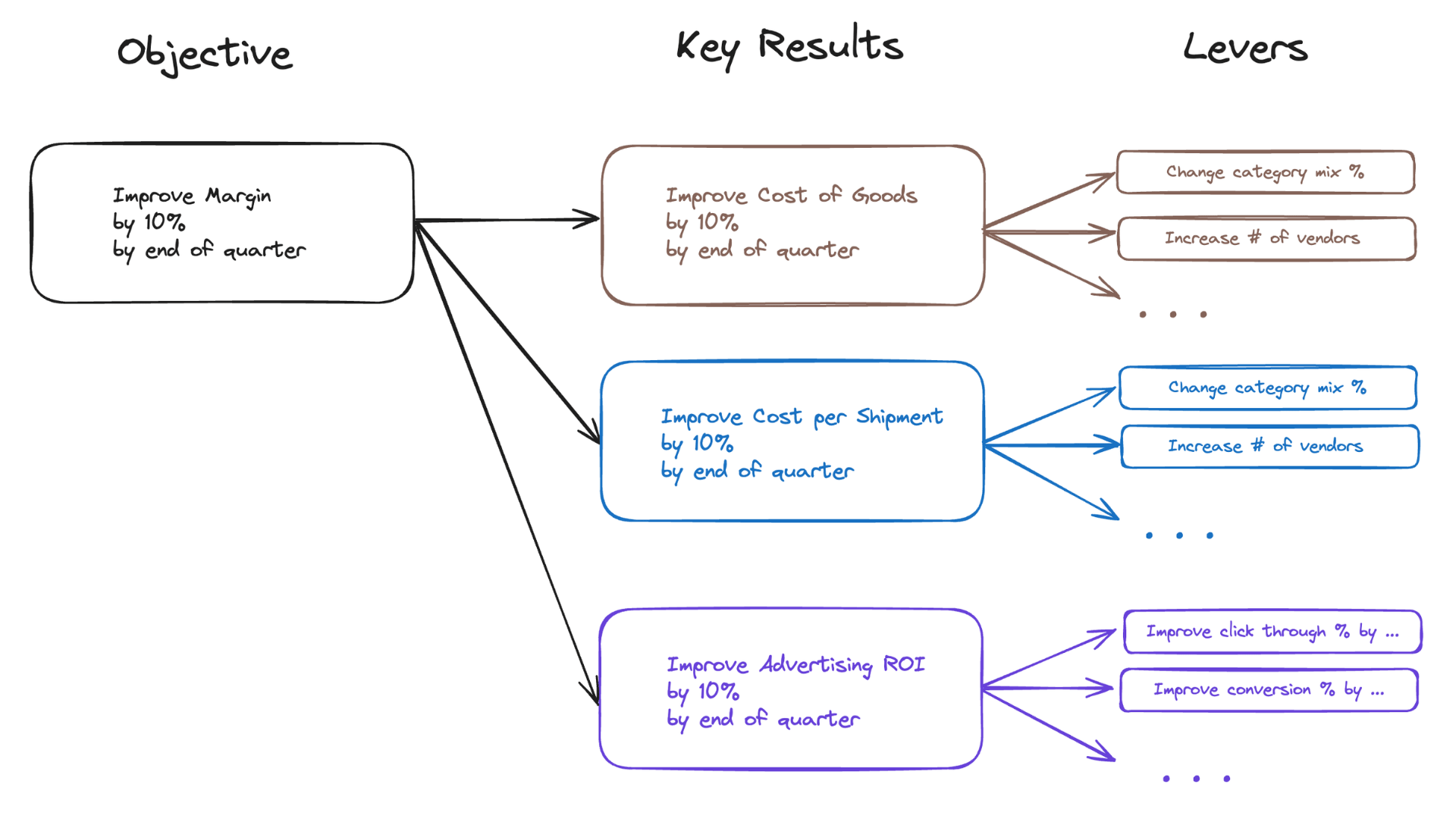How to Integrate Growth Levers into OKRs?
Let's now combine the concepts of:
☞ input & output Growth Metrics (from the 1st skilleton on Growth roadmap),
☞ Growth Levers (from the 2nd skilleton), and
☞ Objectives & Key Results (from the current skilleton).
High-level company-wide goals such as increasing revenue, optimising costs, increasing market share, improving profitability, etc., occupy the level of Objectives.
In order to achieve those Objectives, certain Key Results need to be achieved. For example, an Objective of improving costs by 10% might split into Key Results of:
1. improving cost of goods sold by 10 %,
2. improving cost of shipping by 10%, and
3. improving advertising ROI by 10%
However, these Key Results themselves are generally Output Metrics, and are not actionable by themselves. Hence, we need to identify, assess, and map actionable Growth Levers to these Key Metrics.
Such a end-to-end mapping of Business Objectives to Growth Metric Hierarchy to actionable Levers gives us a robust Growth Roadmap.

Here is another example. Let's consider an ed-tech platform in India, which has an objective to 'improve learner experience to best-in-class'.
One key result mapped to this objective can be: 'Increase course completion rates by 20% in the next year'.
To achieve this, they identify growth levers such as 1. introducing interactive course elements and 2. personalized learning paths.
These levers are then integrated into their OKRs, with action items like:
1. 'Implement interactive elements in 50% of courses' and
2. 'Personalize learning paths for 30% of users',
directly contributing to the main objective.